The early days of dinosaur evolution remain one of paleontology’s most fascinating yet understudied chapters. While Jurassic and Cretaceous giants like Tyrannosaurus rex and Brachiosaurus have captured public imagination for generations, their evolutionary precursors from the dawn of the Mesozoic Era have often been overlooked. Dr. Hans-Dieter Sues, a distinguished paleontologist and Senior Scientist at the Smithsonian National Museum of Natural History, has dedicated much of his career to shedding light on these “forgotten dinosaurs” and the ecosystems they inhabited. His meticulous research has revolutionized our understanding of early dinosaur evolution and the dramatic environmental transitions that shaped life during this pivotal period in Earth’s history.
The Scientific Journey of Dr. Hans-Dieter Sues

Born in Germany and educated at the University of Munich and Harvard University, Dr. Hans-Dieter Sues has built an impressive career spanning over four decades in paleontological research. His fascination with prehistoric life began early, but it was his focused work on Triassic and Early Jurassic vertebrates that established him as a leading authority in the field. Before joining the Smithsonian Institution, Dr. Sues held positions at the Royal Ontario Museum and the Carnegie Museum of Natural History, where he conducted groundbreaking fieldwork across North America, Europe, Asia, and Africa. Throughout his career, he has described numerous new dinosaur species and related reptiles, published hundreds of scientific papers, and authored several influential books that have shaped our understanding of Mesozoic ecosystems. Dr. Sues’ methodical approach combines detailed anatomical studies with broader ecological and evolutionary perspectives, allowing him to reconstruct not just isolated species but entire ancient worlds.
Understanding the Early Mesozoic Era

The Early Mesozoic Era, encompassing the Triassic Period (252-201 million years ago) and Early Jurassic Period (201-174 million years ago), represents a critical transition in Earth’s history. This timeframe followed the devastating Permian-Triassic extinction event, which eliminated approximately 95% of marine species and 70% of terrestrial vertebrate species. The Early Mesozoic witnessed the recovery and restructuring of global ecosystems, the breakup of the supercontinent Pangaea, and most significantly, the evolutionary radiation of dinosaurs from modest beginnings to ecological dominance. Climate patterns during this period fluctuated dramatically, with generally warm conditions interrupted by episodes of intense volcanic activity that triggered additional extinction events. Understanding this dynamic backdrop has been essential to Dr. Sues’ work, as these environmental conditions directly influenced the evolutionary paths of early dinosaurs and their contemporaries, shaping adaptations that would define dinosaur evolution for the subsequent 150 million years.
The Triassic Puzzle: Earliest Dinosaur Evolution

The origins of dinosaurs remain one of paleontology’s most intriguing puzzles, and Dr. Sues has made significant contributions toward solving it. Dinosaurs emerged from a group of reptiles called archosaurs during the Middle Triassic, approximately 245-230 million years ago. Dr. Sue’s research has revealed that early dinosaurs were generally small, bipedal animals that initially represented just one component of diverse terrestrial ecosystems dominated by other reptile groups. His work documenting transitional forms and early dinosaur relatives has helped establish that dinosaurs did not rise to dominance immediately but gradually expanded their ecological roles over millions of years. Particularly significant was his research on Triassic formations in North America and Argentina, which yielded fossils that helped clarify the distinguishing anatomical features of early dinosaurs versus their close relatives. Through these studies, Dr. Sues demonstrated that many traits once considered uniquely “dinosaurian” actually appeared incrementally through an extended evolutionary process, challenging earlier simplistic models of dinosaur origins.
Discoveries in the Ghost Ranch Formation

Among Dr. Sue’s most significant contributions to early dinosaur paleontology are his extensive studies of the Ghost Ranch Formation in New Mexico. This richly fossiliferous Triassic deposit has yielded thousands of specimens of Coelophysis bauri, one of the best-represented early dinosaurs. Dr. Sue’s detailed analyses of these fossils provided unprecedented insights into the anatomy, growth patterns, and population structure of an early dinosaur species. His work demonstrated that Coelophysis exhibited several features that would later become characteristic of more advanced theropod dinosaurs, such as hollow bones and three-fingered hands, while still retaining more primitive characteristics. The Ghost Ranch assemblage also allowed Dr. Sues to examine evidence for social behavior and ecological interactions in early dinosaurs. By analyzing specimens of different ages found together, he contributed to theories about potential group living or pack behavior in these animals, foreshadowing social structures that would become more elaborate in later dinosaur lineages. This research helped transform our understanding of early theropods from simple “primitive” creatures to sophisticated animals with complex adaptations and behaviors.
The Rise of Sauropodomorphs
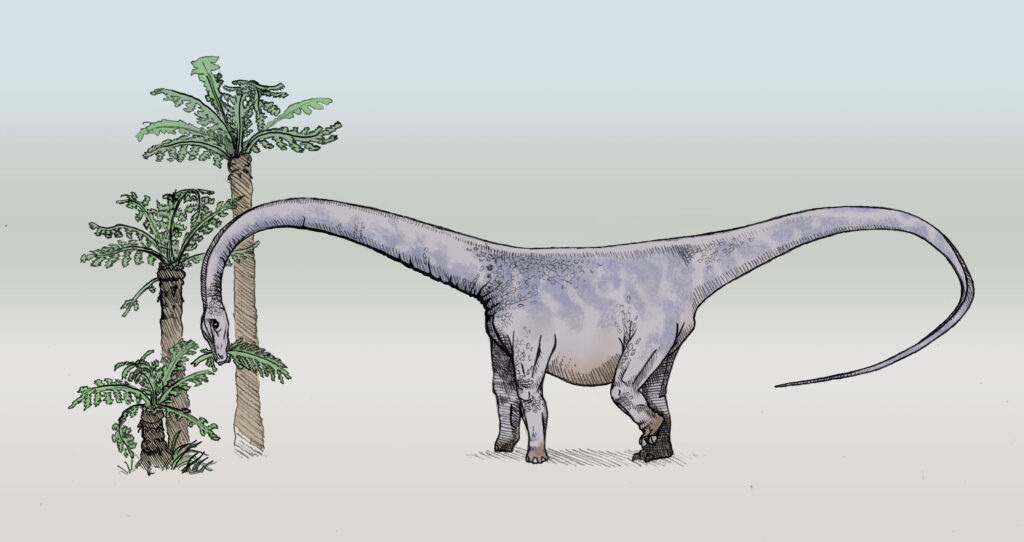
Dr. Sues has made substantial contributions to our understanding of early sauropodomorphs, the evolutionary precursors to the gigantic long-necked sauropods that would later dominate Jurassic and Cretaceous landscapes. His research on specimens from North America, Europe, and South Africa helped clarify the transitional steps between small, partially bipedal prosauropods and their massive quadrupedal descendants. Particularly noteworthy was his work on Plateosaurus from Germanic Triassic beds and Massospondylus from southern Africa, demonstrating how these medium-sized herbivores exhibited anatomical features that foreshadowed the specialized feeding adaptations of later sauropods. Dr. Sues documented the gradual development of features for processing plant material, changes in neck vertebrae allowing for greater reach, and skeletal modifications supporting increasing body size. His studies also revealed that early sauropodomorphs were more ecologically diverse than previously recognized, occupying various herbivorous niches in Triassic-Jurassic ecosystems long before the appearance of true sauropods. This research helped establish that the evolution toward gigantism in this lineage was a complex, stepwise process driven by specific ecological pressures rather than a simple progression toward larger size.
Early Ornithischians: The Overlooked Dinosaurs

Perhaps the most overlooked dinosaur group from the Early Mesozoic is the ornithischians, which would later diversify into famous forms like Triceratops, Stegosaurus, and hadrosaurs. Dr. Sues has dedicated significant research to these obscure early representatives, documenting their distinctive anatomical features and evolutionary significance. His studies of rare specimens like Lesothosaurus from southern Africa and fragmentary Early Jurassic ornithischians from North America helped establish the basic anatomical pattern that would characterize this major dinosaur lineage. Dr. Sues has demonstrated that early ornithischians were small, agile bipedal herbivores that possessed the beginnings of specialized features for plant processing, including the distinctive predentary bone at the front of the lower jaw. His research challenged earlier views that ornithischians appeared relatively late in dinosaur evolution, presenting evidence that the group originated in the Late Triassic alongside other dinosaur lineages but remained ecologically modest and geographically restricted until favorable conditions in the Jurassic allowed their radiation. This work has been crucial in understanding the complete picture of early dinosaur diversity and the relative evolutionary trajectories of the major dinosaur groups.
Contemporaries and Competitors: Non-Dinosaurian Reptiles

A distinctive aspect of Dr. Sue’s research is his holistic approach to studying Early Mesozoic ecosystems, recognizing that dinosaurs existed within complex communities of other reptiles. His extensive work on non-dinosaurian archosaurs like aetosaurs, rauisuchians, and early crocodylomorphs has demonstrated that these groups were often the dominant land predators and herbivores during much of the Triassic, with dinosaurs initially playing secondary roles. Particularly significant was his research on phytosaurs, crocodile-like reptiles that dominated freshwater environments, and poposaurids, bipedal predators that evolved remarkably dinosaur-like features through convergent evolution. Dr. Sues has also studied the diverse cynodont therapsids of this period, the group that would eventually give rise to mammals. By examining the competitive relationships and ecological partitioning between these groups and early dinosaurs, his research has revealed that dinosaur dominance was not inevitable but resulted from specific environmental changes and extinction events that disproportionately affected non-dinosaurian reptiles. This contextual understanding has transformed our perception of dinosaur ascendancy from an inevitability to a historical contingency dependent on particular circumstances.
The End-Triassic Extinction Event

The boundary between the Triassic and Jurassic periods was marked by a severe mass extinction event that dramatically reshaped terrestrial ecosystems and created opportunities for dinosaur dominance. Dr. Sues has conducted extensive research on this pivotal transition, examining fossil assemblages from before and after the extinction to document changing faunal compositions. His studies across multiple continents have demonstrated that while many groups of non-dinosaurian reptiles suffered severe losses or complete extinction, dinosaurs as a group survived relatively unscathed and rapidly expanded into vacated ecological niches. Dr. Sue’s work has helped link this extinction event to massive volcanic eruptions associated with the breakup of Pangaea, which triggered climate changes, ocean acidification, and atmospheric transformations. By analyzing the selective nature of this extinction event, he has identified potential reasons for dinosaur survival, including physiological adaptations that may have made them more resilient to changing environmental conditions. This research provides crucial context for understanding how dinosaurs transitioned from being minor components of Late Triassic ecosystems to the dominant terrestrial vertebrates of the Jurassic and Cretaceous periods.
Field Methods and Fossil Detection Techniques
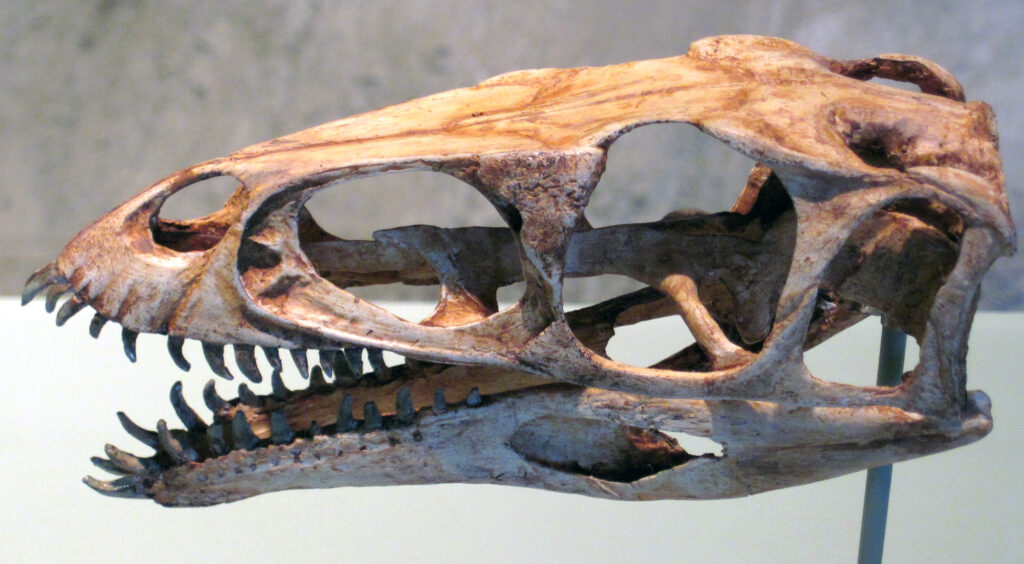
Throughout his career, Dr. Sues has been at the forefront of developing and implementing innovative field techniques for locating and recovering early dinosaur fossils. Early Mesozoic dinosaur remains are often fragmentary, smaller, and less common than their later counterparts, requiring specialized approaches to their discovery and excavation. Dr. Sues pioneered the application of systematic surface surveying methods in Triassic and Early Jurassic formations, training teams to recognize even the smallest dinosaur bone fragments and teeth that might be overlooked by conventional paleontological surveys. He has also advocated for interdisciplinary approaches that combine traditional paleontological fieldwork with geological analysis, helping to identify specific sedimentary environments that are most likely to preserve early dinosaur remains. Additionally, Dr. Sues has been instrumental in promoting microfossil screening techniques, where bulk sediment samples are processed through fine sieves to recover minute bones, teeth, and scales that provide insights into smaller components of early dinosaur faunas. These methodological contributions have substantially increased the discovery rate of early dinosaur fossils and transformed our understanding of Early Mesozoic biodiversity.
Laboratory Analysis and Anatomical Studies
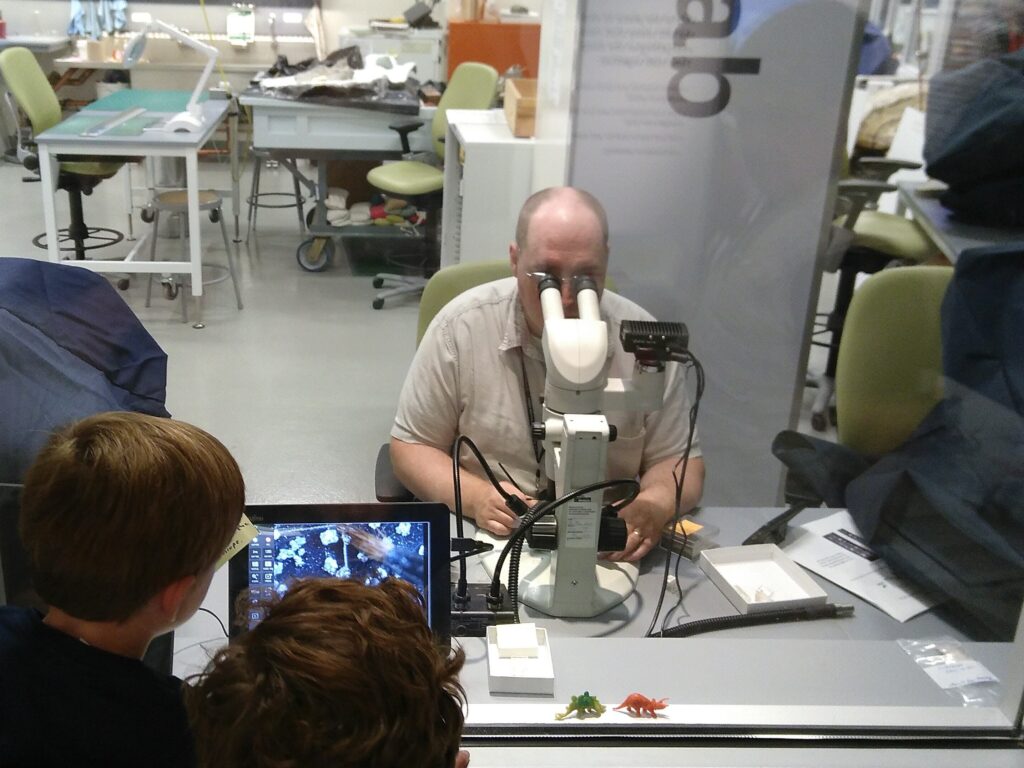
In the laboratory, Dr. Sues has applied cutting-edge analytical techniques to extract maximum information from often fragmentary early dinosaur specimens. His research has frequently employed advanced imaging technologies like CT scanning to visualize internal structures of fossils without damaging them, revealing details of brain cases, inner ears, and growth patterns that would otherwise remain inaccessible. Dr. Sues has been particularly innovative in his application of histological analysis, studying thin sections of fossil bones under microscopes to determine growth rates, life histories, and physiological characteristics of early dinosaurs. His comparative anatomical studies have been especially significant, meticulously documenting shared derived characteristics that help clarify evolutionary relationships between early dinosaur groups. Additionally, Dr. Sues has collaborated with geochemists to analyze the isotopic composition of early dinosaur teeth and bones, yielding insights into their diets, metabolic rates, and environmental adaptations. These multidisciplinary analytical approaches have allowed him to extract remarkably detailed biological information from the limited fossil material available for early dinosaurs, creating comprehensive reconstructions of animals that lived over 200 million years ago.
Public Engagement and Educational Impact
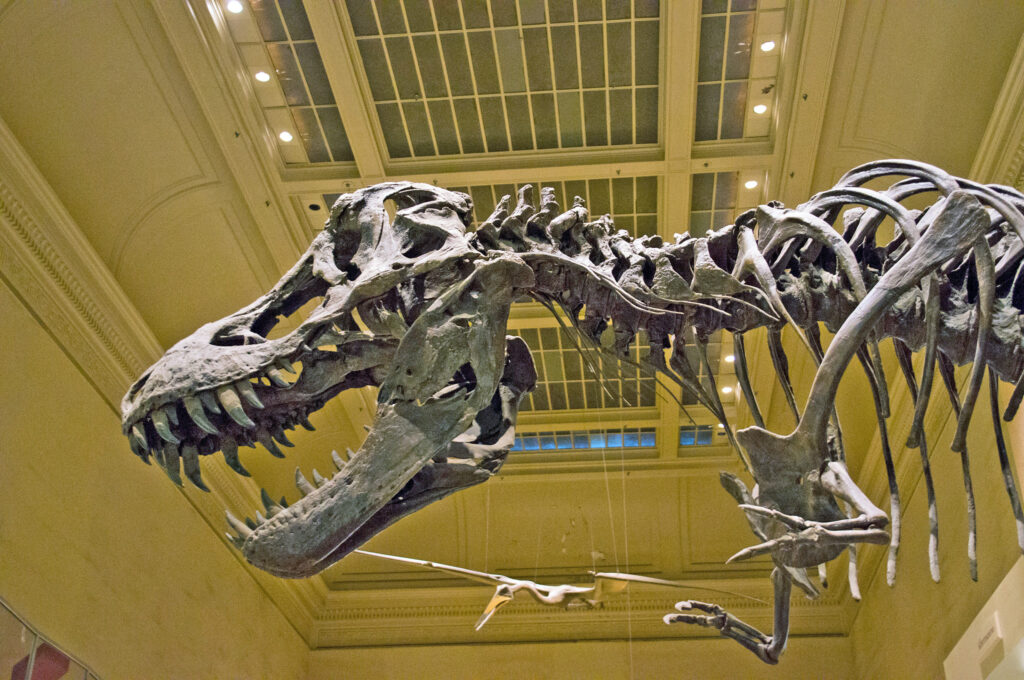
Beyond his scientific contributions, Dr. Sues has been a tireless advocate for public education about early dinosaur evolution. Recognizing that public fascination with dinosaurs tends to focus on later, more spectacular forms, he has worked to communicate the scientific importance and inherent fascination of early dinosaurs through accessible publications, museum exhibitions, and media appearances. As curator at the Smithsonian National Museum of Natural History, he has developed innovative displays that highlight the evolutionary context of early dinosaurs, helping visitors understand the gradual process through which familiar dinosaur features emerged. Dr. Sues has authored several books for general audiences that specifically emphasize early dinosaur evolution, including “The Rise of Reptiles: 320 Million Years of Evolution” and contributions to “Dinosaurs: The Most Complete, Up-to-Date Encyclopedia for Dinosaur Lovers of All Ages.” His active presence on social media platforms has also helped reach new audiences with information about early dinosaur discoveries. Through these various outreach efforts, Dr. Sues has played a crucial role in expanding public appreciation for the lesser-known but scientifically vital early chapters of dinosaur history.
Current Research and Future Directions
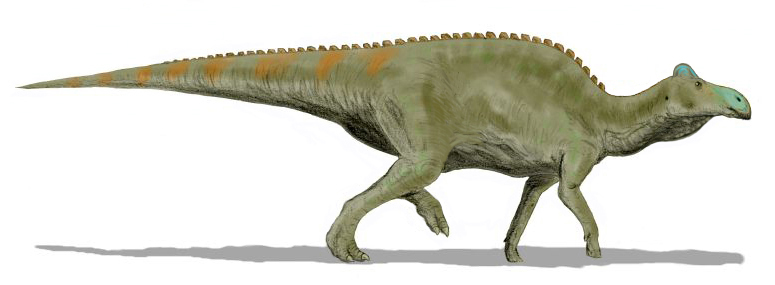
Dr. Sues continues to actively pursue research on Early Mesozoic dinosaurs and their ecosystems, with several ongoing projects that promise to further expand our understanding of this critical period. He is currently involved in excavations in the Early Jurassic Kayenta Formation of Arizona, which has yielded tantalizing but fragmentary remains of dinosaurs from the period immediately following the End-Triassic extinction event. Another focus of his recent work has been revising the taxonomy and relationships of early ornithischian dinosaurs based on new specimens and analytical techniques, potentially reshaping our understanding of this poorly documented group. Dr. Sues is also exploring the application of geometric morphometrics and other quantitative methods to analyze subtle anatomical variations in early dinosaur fossils, potentially revealing cryptic species diversity and evolutionary patterns previously unrecognized. Looking toward the future, he has emphasized the importance of expanded fieldwork in understudied Early Mesozoic deposits in Asia and Africa, which may preserve crucial fossils documenting regional variations in early dinosaur evolution. These ongoing research directions promise to continue filling crucial gaps in our understanding of how dinosaurs first evolved and diversified during the formative period of their evolutionary history.
Legacy and Impact on Paleontology

Dr. Hans-Dieter Sues’ decades of research on early dinosaurs and their contemporaries have fundamentally transformed paleontological understanding of the Early Mesozoic world. His meticulous studies have helped reconstruct the incremental evolutionary steps through which dinosaurs developed their distinctive characteristics and gradually ascended to ecological dominance. Beyond specific discoveries, perhaps his most significant contribution has been establishing a comprehensive framework for understanding early dinosaur evolution in its full ecological and environmental context. This holistic approach has inspired a generation of paleontologists to view dinosaurs not as isolated specimens but as components of dynamic ecosystems shaped by complex evolutionary and environmental forces. Dr. Sues has also had a substantial impact through his mentorship of younger scientists, many of whom have gone on to make significant contributions to vertebrate paleontology. Through his combined legacy of scientific discoveries, methodological innovations, theoretical frameworks, and educational influence, Dr. Sues has ensured that the “forgotten dinosaurs” of the Early Mesozoic have reclaimed their rightful place in the scientific understanding of Earth’s evolutionary history and public appreciation of these remarkable animals.
Dr Hans-Dieter Sues and the Legacy of Early Mesozoic Dinosaurs

The study of early dinosaurs represents one of paleontology’s most challenging yet rewarding frontiers. Dr. Hans-Dieter Sues’ career-long dedication to investigating these ancient creatures has illuminated a critical chapter in Earth’s history that bridges the aftermath of the Permian extinction with the better-known dinosaur-dominated worlds of the later Mesozoic. His research reminds us that even the most iconic groups of organisms began as modest players in complex ecosystems, achieving dominance through gradual adaptation rather than inherent superiority. As new technologies and discoveries continue to enhance our ability to study Earth’s distant past, the foundation established by Dr. Sues’ work ensures that the forgotten dinosaurs of the Early Mesozoic will remain forgotten no more, but rather recognized as essential chapters in the remarkable evolutionary story of life on our planet.




